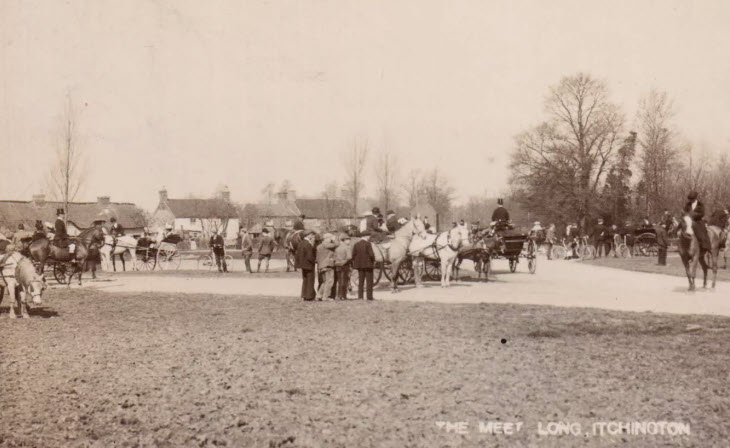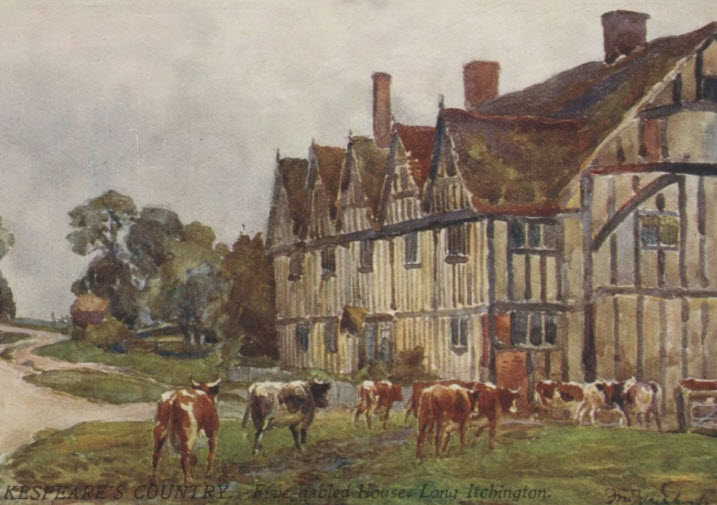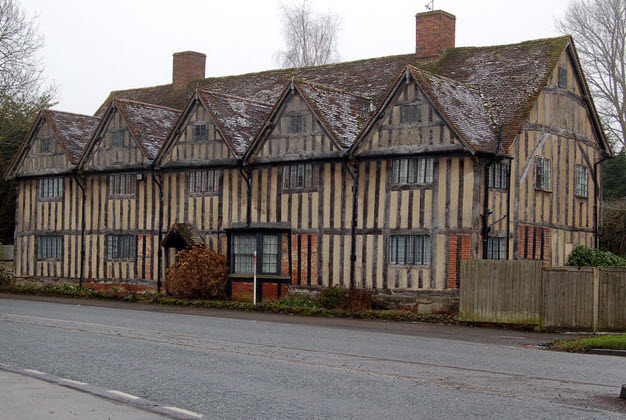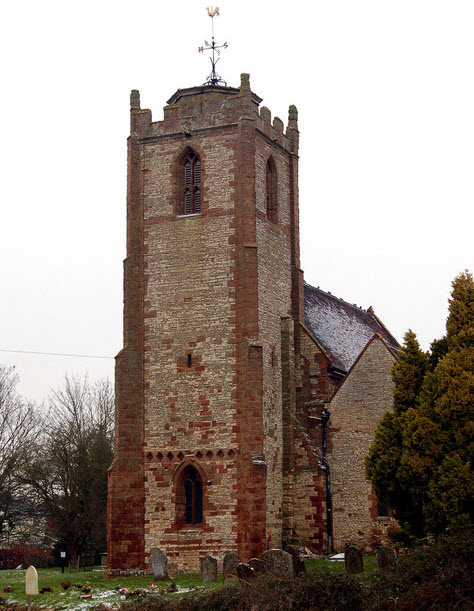The Life and History of the Warwickshire Village
of Long Itchington
Long Itchington stands as one of Warwickshire’s most historically significant villages, with a
remarkable heritage spanning over a millennium that encompasses Saxon saints, Tudor royalty,
industrial innovation, and enduring rural character.
This ancient settlement,
Located in the heart of England’s countryside, has evolved from a substantial medieval community, once twenty
times larger than Birmingham, according to the Domesday Book, into a thriving modern village
that carefully preserves its rich historical legacy while adapting to contemporary needs.
The village’s strategic position along major transport routes, from medieval riverways to modern
motorways, combined with its notable residents, including Saint Wulfstan and visits from Queen
Elizabeth I created a unique tapestry of English rural history that continues to shape its
identity today.


Ancient Origins and Early Medieval Development
The origins of Long Itchington reach deep into England’s pre-Norman past, with archaeological
and documentary evidence revealing a settlement history extending at least two millennia.
The village’s name derives from its position along the River Itchen, literally meaning “farmstead by
the River Itchen,” reflecting the fundamental relationship between the community and its natural environment
that has persisted throughout its history.
Early Anglo-Saxon charters record the
settlement as “Ycaentune,” later appearing in the Domesday Book as “Icentone,” demonstrating
the continuity of habitation despite the various political upheavals that swept across medieval
England.
The strategic importance of Long Itchington becomes apparent when examining its early
medieval context, particularly its connection to the resistance against Roman invasion.
The river Itchen formed part of the territorial boundary of Queen Boudica’s Iceni tribe as they resisted
Roman expansion from the south and west, positioning the area at the crossroads of ancient
British and Roman civilisations.
This geographical significance would prove enduring, as the
settlement’s location continued to attract attention from subsequent rulers and administrators
throughout the medieval period.
Long Itchington’s most famous figure
Perhaps the most illustrious figure associated with Long Itchington’s early history is Saint
Wulfstan, born in the village around 1008-1012 AD. Wulfstan’s life exemplifies the
remarkable individuals that medieval Long Itchington produced, rising from his village origins to
became Bishop of Worcester in 1062 and earned distinction as the last surviving pre-Norman
Conquest bishop.
His legacy extends far beyond ecclesiastical administration;
Wulfstan became renowned as a social reformer who fought against slavery, particularly campaigning to
end the slave trade involving Irish slaves sold in Bristol. His transformation from a
young man distracted by worldly pleasures to a devoted vegetarian, after being disturbed from
his devotions by the smell of roast goose illustrates the spiritual intensity that characterised
Medieval religious life.


Tudor Grandeur and Royal Connections
The Tudor period marked a pinnacle of prestige for Long Itchington, transforming it from a
significant medieval settlement into a village graced by royal attention.
The Tudor House
The construction of the Tudor House around 1525 by John Dudley, 1st Duke of Northumberland and father of the Earl of
Leicester’s Sir Robert Dudley established Long Itchington as a centre of aristocratic influence.
This magnificent half-timbered structure, featuring five distinctive gables with the date 1511
visible on one, represented the architectural ambitions of the Tudor nobility and their desire to
create impressive country estates.
The pinnacle of Long Itchington’s royal connections occurred during the reign of Queen
Elizabeth I, who honoured the village with not one but two significant visits.
On August 12, 1572,
The Queen dined at the Tudor House, then the residence of Lady Anne Holbourne, daughter of
Robert Dudley, Earl of Leicester.
This first visit was followed by an even more elaborate
occasion on July 9, 1575, when Queen Elizabeth and her royal entourage were entertained in a
vast tent erected on the village green adjacent to the Tudor House.
These visits were described as providing “glorious entertainment,” reflecting the considerable effort and expense
invested in hosting the monarch and demonstrating Long Itchington’s importance within the
network of Elizabethan court society.
The Tudor House itself became a symbol of the village’s elevated status, with its Grade II* listing
today, recognising its exceptional historical and architectural significance.
Changing times
The property’s subsequent history reflects the changing fortunes of English rural estates, transforming from a
grand aristocratic residence to an inn, then a farm, before eventually being purchased by
Francis Hurt Sitwell around 1760. The literary connections continued into the modern era, with
Dame Edith Sitwell reportedly compiled part of her famous “Facade” collection of poems while
residing at the property, adding another layer to the village’s cultural heritage.
Industrial Heritage and Transport Revolution
Long Itchington’s industrial history represents a fascinating intersection of rural tradition and
Industrial innovation, most notably exemplified by the establishment and development of cement
production in the area.
The industrial transformation began in the mid-19th century with the
recognition of the area’s geological potential, as the early Jurassic Blue Lias rock formation
provided excellent raw material for cement manufacturing.
The Southam Cement Works.
Initially described as the “Long Itchington Cement and Lime Works” on the 1886 Ordnance
Survey map, began operations in 1854 under Mr. Oldham, before passing through various
ownership changes, including Tatham, Kay and Co in 1868 and finally the Rugby Portland
Cement Company in 1934.
The cement industry’s impact extended far beyond mere industrial production, fundamentally
reshaping the social geography of the area through the creation of the Model Village.
Constructed in phases beginning in October 1912, this purpose-built workers’ settlement
represented progressive industrial housing policies of the early 20th century.
Housing for workers
The Model Village utilised concrete construction, reflecting both the practical availability of materials from
the cement works and the forward-thinking architectural approaches of the period.
This self-contained development provided accommodation for cement workers and their families,
creating a distinct community within the broader Long Itchington parish that maintained its own
character while contributing to the village’s overall economic vitality.
The railway arrives
The arrival of railway infrastructure in the late 19th century revolutionised Long Itchington’s
connectivity and economic prospects. Southam and Long Itchington railway station opened on
August 1, 1895, as part of the Leamington to Weedon railway line, was constructed entirely of brick
and represented a substantial investment in the area’s transport infrastructure.
The station’s strategic importance was enhanced by its proximity to the cement works, ensuring continued
freight operations even after passenger services ceased on September 15, 1958.
The industrial railway connections persisted for decades beyond passenger closure, with cement
traffic finally ended on August 1, 1985—exactly 90 years after the line’s opening, when road
transport ultimately proved more economical.
Geographic Setting and Natural Environment
Long Itchington’s geographic position has fundamentally shaped its historical development and
contemporary character, situated strategically in south-east Warwickshire, approximately 12
miles south of Coventry, 15 miles north of Banbury, and 6 miles east of Royal Leamington Spa.
The village’s location along the A423 road between Coventry and Oxford ensures continued
connectivity to major urban centres while maintaining its rural character.
This positioning reflects a long-standing pattern of settlement along major transport routes, from ancient trackways
to modern motorways, which has sustained the community’s viability across centuries of change.
The Grand Union Canal
Flowing east-west through the village and connecting London to
Birmingham represents another crucial element of Long Itchington’s geographic significance.
The canal crosses under the A423 to the south of the village and passes over the River
Itchen, creating a complex transportation network that historically facilitated both passenger
travel and freight movement. The dismantled London and North Western Railway line adds
another layer to this transport heritage, with portions converted to cycleway use as part of the
National Cycle Network, demonstrating how historic infrastructure continues to serve the community
needs in modified forms.
The village pond stands as Long Itchington’s most distinctive natural feature, holding the
distinction of being the largest village pond in Warwickshire.
The impressive pond water feature
Is actually the remains of an ancient clay pit known locally as “The Pit,” which serves as the focal point of
the village green and creates an attractive centrepiece surrounded by mature lime trees.
The pond’s management reflects contemporary environmental consciousness, with the parish wildlife
team working in conjunction with Warwickshire Wildlife Trust and the Freshwater Habitats Trust
to maintain ecological health while providing recreational amenities for residents and visitors.
Annual maintenance activities and careful habitat management ensure the pond continues to
support diverse wildlife while serving as a symbol of the village’s commitment to environmental
stewardship.


Religious and Architectural Heritage
Holy Trinity Church
Represents the spiritual and architectural heart of Long Itchington,
embodying nearly a millennium of Christian worship and community life. Originating in the 1100s.
The church has undergone numerous modifications and expansions that reflect changing
architectural styles and community needs across the centuries.
The early 13th-century South aisle demonstrates Norman influence, while the chancel, nave, and west tower were built in the
early 14th century represents the height of medieval church architecture in the region.
The 15th-century additions, including the clerestory added to the nave and the rebuilding of the nave
arcade, showcase the continued investment in religious infrastructure during the late medieval period.
The church’s architectural evolution tells a story of community prosperity and devotion.
With the finest work dating to around 1300, including the chancel north and south windows and the south
aisle east window.
Particularly notable are the finely carved tomb recesses, sedilia, and double
piscina, Easter sepulchre, and chancel arch, which demonstrate the high level of craftsmanship
available to medieval communities, and the importance placed on creating beautiful sacred
spaces.
The 14th-century screen adds another layer of historical significance, while the west
tower’s truncated appearance recalls the dramatic moment in 1762 when the spire was blown
down, requiring reconstruction.
The Grade II* listing of Holy Trinity Church recognises its exceptional architectural and historical
importance, placing it among the most significant religious buildings in Warwickshire
The church’s role extends beyond purely religious functions, serving as a repository of community
memory and a symbol of continuity across generations of Long Itchington residents.
The 1928 restoration work demonstrates the ongoing commitment to preserving this architectural heritage
while ensuring the building remains functional for contemporary worship and community
activities.
The broader architectural heritage of Long Itchington includes several other significant
structures that contribute to the village’s historic character.
The Old Manor House, dating from the 15th century,
Located off the village square, represents secular medieval architecture and
provides tangible connections to the village’s feudal past.
The conservation area, designated in July 1969 and extended in June 1997, encompasses most of the 19th-century
village core and ensures that future development respects the historic urban fabric.
This conservation designation reflects recognition of Long Itchington’s architectural significance and
commitment to preserving its visual character for future generations.
Contemporary Life and Community Structure
Modern Long Itchington presents a vibrant community that successfully balances historical
preservation with contemporary needs, supporting a population of 2,704 residents according to
the 2021 census, including the hamlet of Bascote.
The demographic profile
Reflects typical rural English patterns, with the 2011 census showing a population of 2,332 comprising
approximately 52% females and 48% males, with an average age of 43 and median age of 45.
The educational attainment and occupational structure demonstrate the area’s attraction
to professional workers, with 22.2% employed in professional occupations and 15.8% serving as
managers, directors, and senior officials.
The village’s amenities reflect both historical legacy and modern requirements, with an
impressive array of eight public houses representing one of the highest concentrations in
Warwickshire.
This abundance of licensed premises reflects both the village’s historical role
as a coaching stop and its contemporary function as a social centre for the surrounding rural
area. Additional facilities include a small shop, a Co-op supermarket, primary school, hairdressers,
community centre, and a park with recreational facilities including a skate ramp.
The presence of both a Church of England parish church and a Congregational chapel demonstrates
the continuing diversity of religious expression within the community.
The parish structure encompasses three distinct communities: Long Itchington village itself, the
hamlets of Bascote and Bascote Heath, and the Model Village.
This administrative arrangement reflects the historical development of settlement patterns and ensures that the
diverse needs of these different communities receive appropriate attention.
The parish covers approximately 5,000 acres 2,000 hectares), providing a substantial rural hinterland that supports
both agricultural activities and recreational pursuits.
The designation of Long Itchington as a
Category 1 Local Service Village in Stratford-on-Avon District Council’s planning Core Strategy
recognises its role as a centre for surrounding rural communities and guides future development
policies.